Each One, Teach One: Footwork in Minnesota
An oral history of footwork in Minnesota, from the dancers and DJs that helped bring this culture to life in the Twin Cities
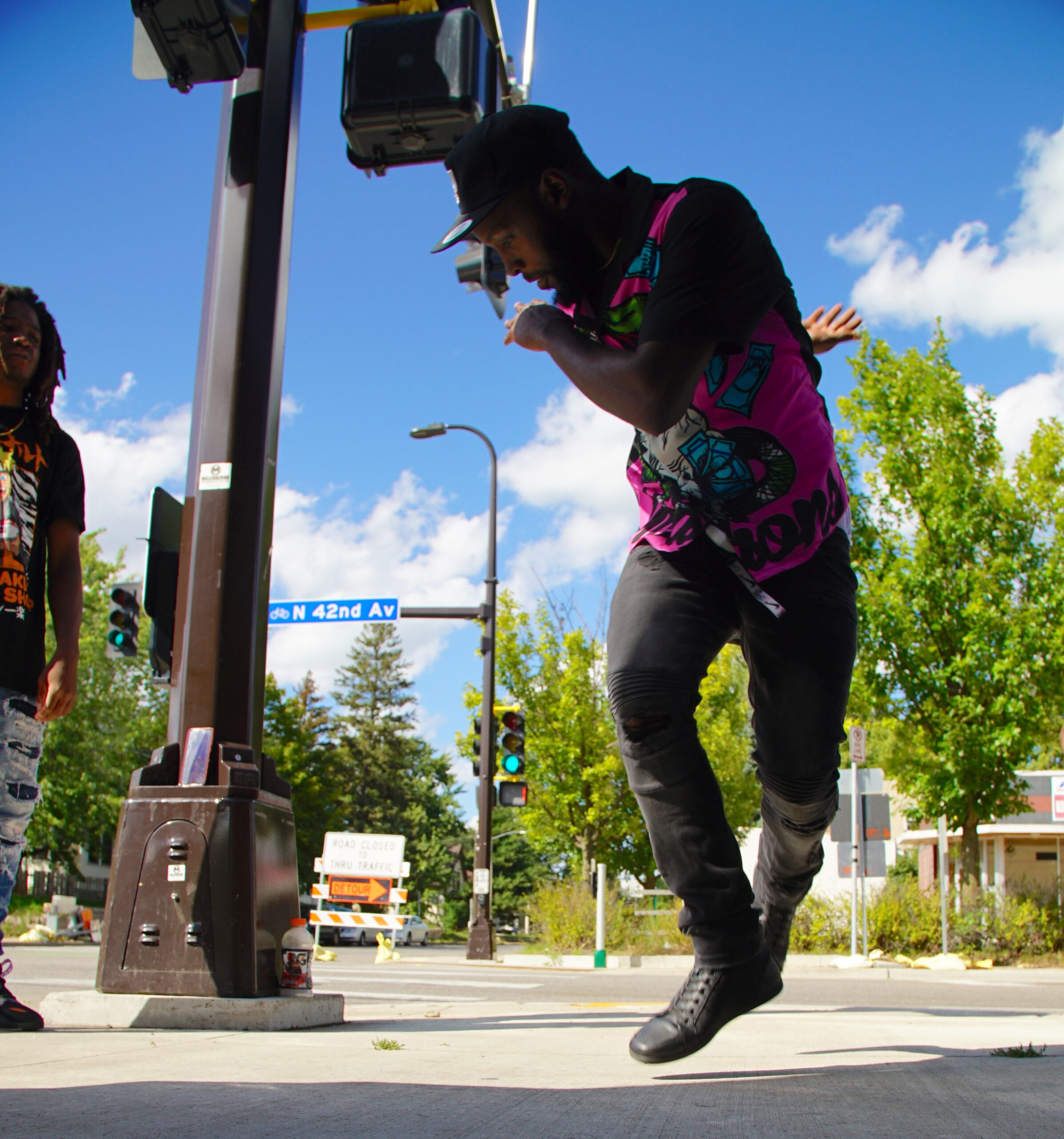
Introduction
It was the winter of 2009 when I began work as a public radio journalist covering footwork dancers and DJs in Chicago. Footwork started in the 1980s as a dance to house music, later inspiring an accompanying electronic music genre also known as footwork. Especially because of the internet, footwork began to spread to the world in the late 2000s. I first heard about it through underground parties in New York, and the sounds immediately drew me back to Chicago, my hometown. Working for NPR Music and later All Things Considered, I documented footwork dancing and music across the city. I visited hotspots like Battlegroundz on 87th Street and the Warzone on the West Side, dug for mixtapes at Out of the Past Records, took notes (and naps) in home studios from Markham to K-Town. The beguiling sounds of footwork music opened my eyes to the dance, and the dance back to the music. Traveling through Chicago, what was an invisible world of artists came into focus. My journalism extended into art and activist scholarship. My work included working directly with footwork artists, designing album art, photographing dancers and DJs across the city. I fell in love with dance filmmaking, documenting a visual language that moved faster than my eyes.
In 2016, I joined The Era Footwork Crew as a filmmaker and photographer. The idea behind the The Era was to amplify the voices, stories and movements of Chicago footwork dancers. The group united dancers from several factions, including former rivals like Jemal “P-Top” De La Cruz from the North Side and Jamal “Litebulb” Oliver from the South Side. We shared the belief that footwork is more than just music and more than just dance. It provides a blueprint for bringing people and diverse artforms together–synchronizing filmmaking, scholarship, community organizing, mental health work, and more.
After six years, we’re now bringing our original performance, IN THE WURKZ, to the Walker Art Center in Minneapolis. The show mixes footwork across the mediums of poetry, films, fashion and choreography. For some Minnesotans, The Era’s show at the Walker will be their first time catching sight of this enduring Chicago tradition. But footwork is far from unknown in Minnesota. To contextualize the show and footwork’s history, the histories below outline more than three decades of footwork in Minnesota, led by Black youth dedicated to bringing their city together, offering community and creative outlets to future generations. “When they saw what we were doing, they said it was a community center,” DJ Tyson told me at a barber shop in north Minneapolis.
Footwork is associated with Chicago the way breakdancing is with the Bronx. In contrast to hip-hop, footwork is a battle dance mapped to the sounds of early house music, especially to the gritty sounds of acid and beat tracks as they played at venues like The Factory on the West Side of Chicago. Footwork emerged in the 80s and 90s from a slew of powerful Black Midwestern dance lineages, including stepping, jacking, and JBs roller skating. Dancer Elvis “Bo Dollar” Chatman innovated and choreographed “the holy ghost” dance in the mid 80s, theatrical choreography that inspired the origins of footwork. House music also propelled new Black youth dance groups in 80s Chicago, and these groups provided a critical context for footwork to flourish. Groups like House-O-Matics and U-Phi-U laced footwork into their choreography, and created space at the end of every show for footworkers to improvise. They brought footwork to Chicago’s legendary stages and parades like the Regal Theater and the Bud Billiken Parade. Footwork united Black youth across the city and suburbs. Elite battle rings of dancers huddled together at roller rinks, in high school hallways and family basements, fashioning a culture that has endured and spread to the world.
By the mid 90s, house music in Chicago morphed, sped up and stripped down into a new iteration known as juke. The word itself, “juke,” echoes longer African American histories, linking house music to ancestors in the juke joints of the American South. In 90s Chicago, juke became a style of house music and youth dancing, something kids did when the adults weren’t looking. Juke music put teenagers in charge, and their influence spread far beyond Chicago. Chicagoans like DJ Tyson took the movement to new cities in the region. Tyson’s party, “Juke How You Wanna,” brought the sound and culture to Twin Cities youth, while Midwestern drill and majorette teams began to incorporate house and footwork into their parades, especially at the Bud Billiken Parade in Chicago.
“Footwork saved my life,” is a phrase hundreds of dancers across generations in Chicago have repeated. For many, the dance is therapy in the face of daily struggles and overlapping oppressions facing low-income Black communities in the Midwest. Under pressure from the city and state, and in the face of what many consider American apartheid in Chicago, footwork became an art and youth movement against the grain of ghettoization, a mobility strategy quicker than the eye, a gateway to community, competition, and joy. Footwork became an art of defiance, an athletic culture led by rebel dancers who eschewed routines for battle. The oral histories in this article widen the frame on footwork to show how The Era’s IN THE WURKZ is embedded in an extensive dance history that links Chicago and Minneapolis together over the last 30 years.
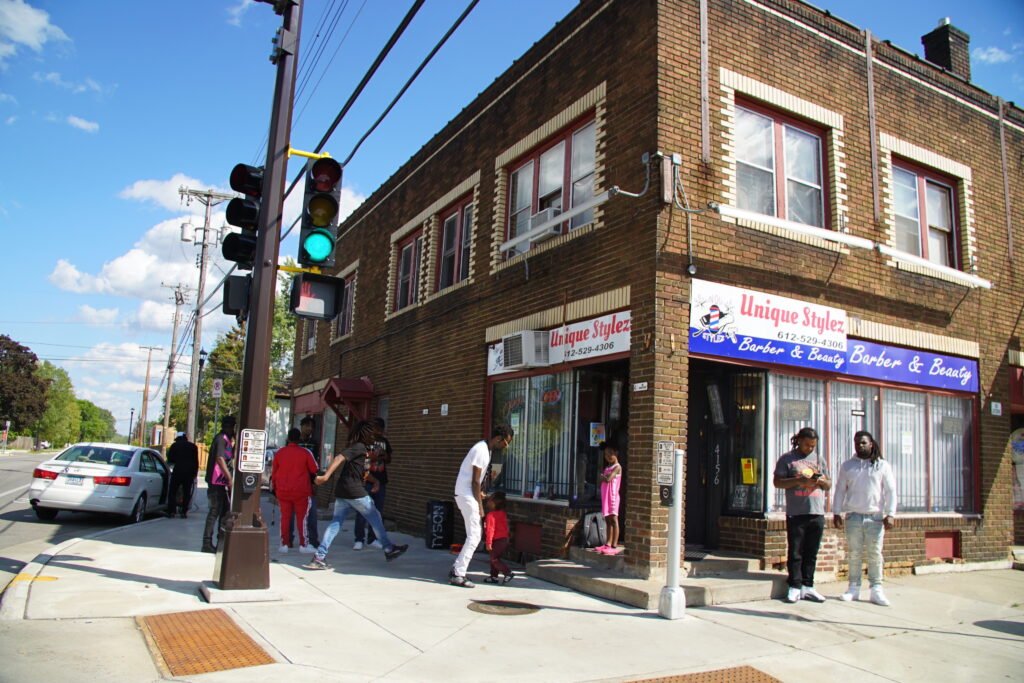
Taywan Conner

I’m Taywan Conner. I moved to Minnesota in 1990 from Chicago, where I grew up. I first discovered footwork at the Taste of Chicago in Englewood. It was more like stepping in 1985/86, set to house music. The music was Farley and Bad Boy Bill. My mom used to listen to that. In the 80s, the clubs in Chicago would be open till like six, seven in the morning. So my mom would come home in the morning, playing house music in our house to start the day. And that’s how I was stuck to it. I heard my mom do it and they used to be jacking the walls. They grabbed the walls. That was the origins of footwork. It was called jacking.
My mom was actually on American Bandstand pregnant with me. And as a kid, I just knew I could dance. I used to dance against groups by myself. I won a Michael Jackson talent show. It was weird. It was crazy. It was the best thing in my life. I had my glove. I was nine.
I moved here to Minneapolis in 1990. I went to Franklin Middle School and immediately got involved with their talent shows. My first talent show here was in 1990, 8th grade. I got into this group called Five Star, a dance group and it was amazing. We started going on local TV shows in Minneapolis and St. Paul, Minnesota.
I didn’t know anything about drill and drum teams in Minnesota. For some reason, my buddies were like, “Oh, we gonna go over here, they play drums. She wants to see you dance.” That’s when I got my audition for Oak Park Drill Team and I took off from there. I added the footwork piece to what they do, bringing the Chicago flavor. So I started teaching footwork to marching drums in early 1997. Then I went to the group First Step, then to The Untouchables. It was amazing to travel with these groups, go to Kansas City, Chicago, Omaha, New York. We went to a lot of places.
House-O-Matics was a lineage from Chicago, but one of the leaders, Jimmy, moved to Minneapolis. And with that, he moved with several members there that choreographed routines here, footwork routines and also hip-hop. In Chicago, I used to see House-O-Matics at the Regal. They were amazing. They used to rock rock. I used to see all the groups battle at the Regal: K-Phi-9, U-Phi-U, House-O-Matics. But I didn’t join up with House-O-Matics until we crossed paths in Minnesota. At the time, I was with a group called Magic Feet.
Places like Graffitiz, the Industry, and the Circle of Discipline—that’s where all the groups, Magic Feet, House-O-Matics, House Squad, got together and met in downtown Minneapolis. I traveled and danced with Magic Feet all over. I remember we footworked at an African royal wedding in New Jersey. They showered us with money, man. They gave us ginger beer and jollof rice all day. We were also supposed to perform at the Apollo on that trip but our singer got to the door and froze. So they didn’t let us in.
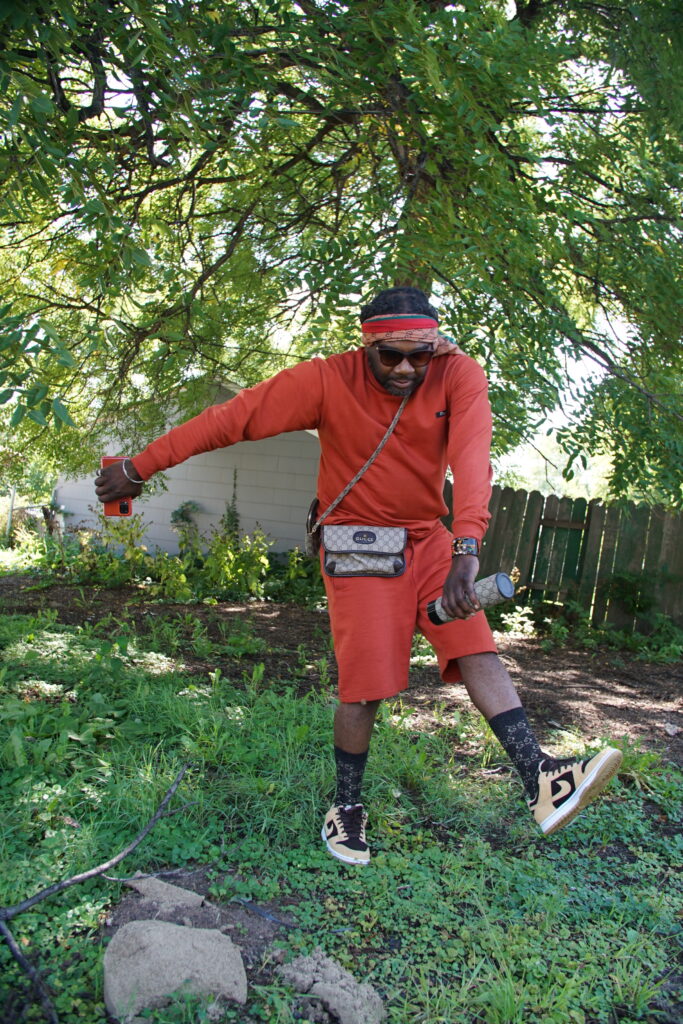
Taywan Conner. Photo: Wills Glasspiegel. 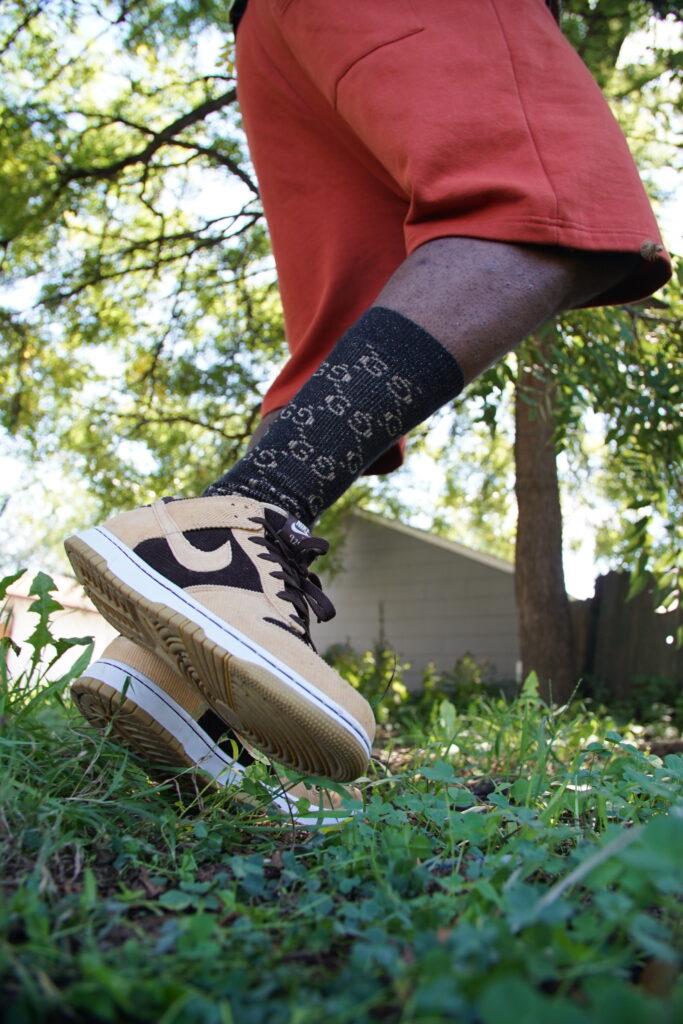
Taywan Conner. Photo: Wills Glasspiegel. 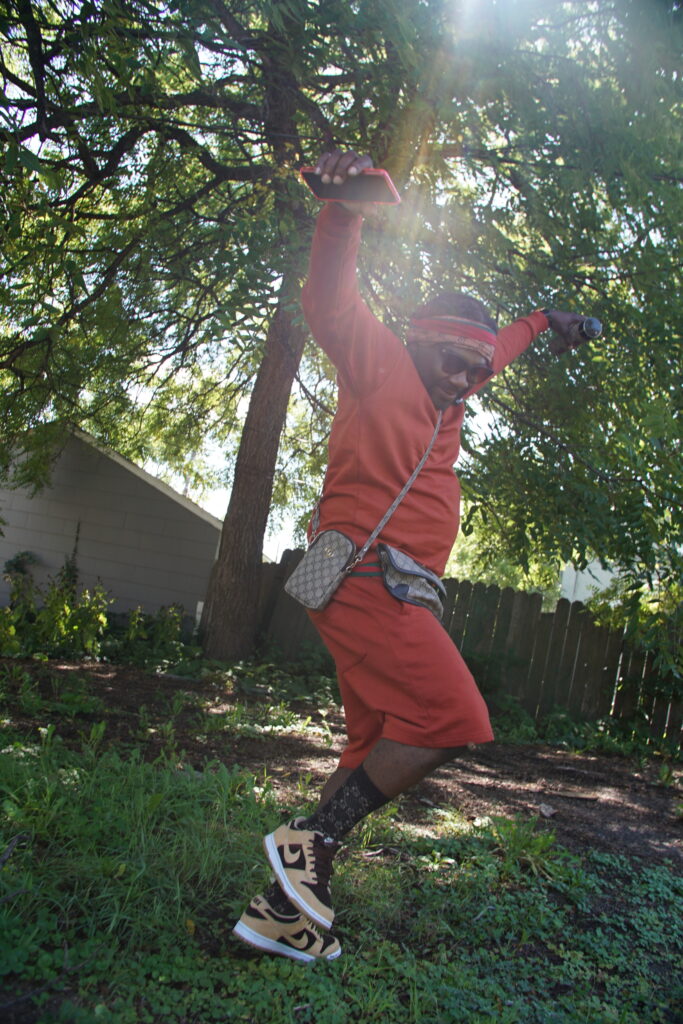
Taywan Conner. Photo: Wills Glasspiegel.
A lot of people say I have a dungeon style with my footwork. I practice a lot by myself, then I go out. I go in excellence. Battles, that’s where I get my strength from. I go for levitation. Some people think it’s about being a magician, but it’s really just mind over matter, and it’s about creating illusions. We used to dance in the mirror. If you could make the mirror jump and bubble, now you’re in the dungeon style. I’ve done that just one time in my life. It was almost horrific.
I do ministry. A lot of my church members came from the dance group they came to church with and we still was footworking. Hosting any type of bands, talent shows. Many of them were homeless. They was gang bangers, they was forgotten. With them, I had a group called Final Vision. I’ve mentored hundreds of young people over the years. Some day, I want to open up a building like a footwork universal studio in Minneapolis to reach the masses.
Nana
LeonNa Williams, aka Nana, a.k.a. Black Ghost, also a founder of Lose to Win Entertainment
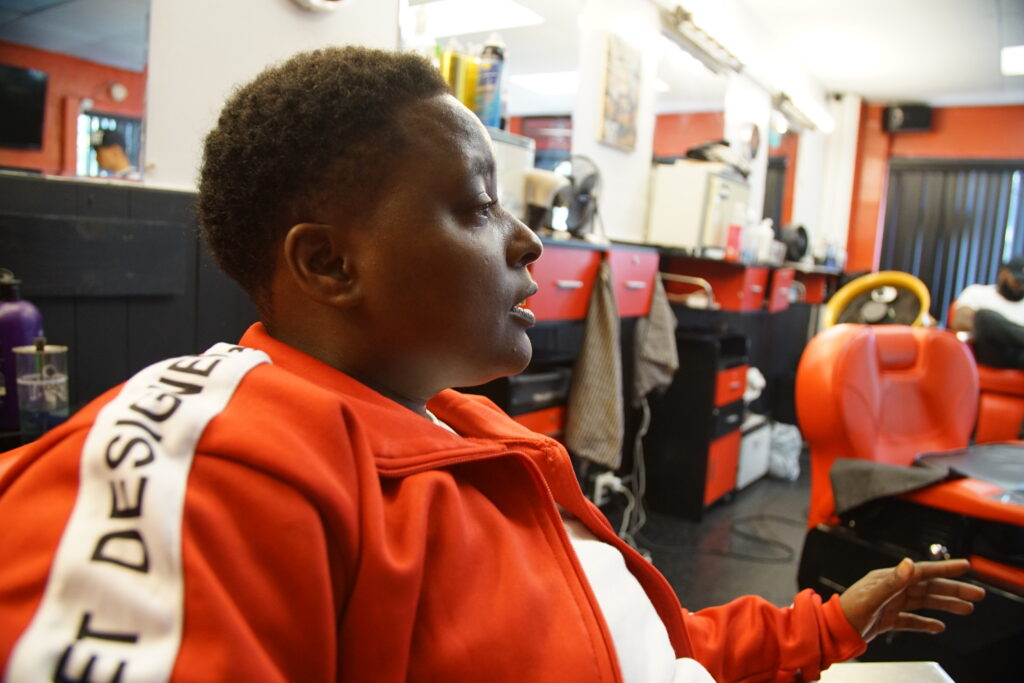
I always loved art, the way things are designed, shaped, and the meaning behind anything in life. Then I learned that dance was an art. So art just really fit into what I was all about. Footwork is expressing yourself. It brings a certain type of energy that you just can’t explain at the moment. Any emotion you have, the way you dance, that’s showing a person what you’re feeling like inside.
Coming up in Chicago, I was around footwork crews. My cousins danced in crews. I was always around that. It was just in my blood. I always knew how to footwork and then when I came to Minnesota, I joined Magic Feet and perfected it to art.
I’m from 79th in Chicago, but have lived between Chicago and Minneapolis my whole life. My mom was on 80th and Ogilvie, my dad was on 78th and Ogilvie. I was raised on 91st and University. It was a tragic moment that brought me originally to Minnesota as a child. My mom left to get us a better life. We hopped on that Greyhound. She could only afford two tickets and there were seven of us. But we had to go and they let us through. I remember that like it was yesterday. We came here and at first stayed in a shelter in North Minneapolis. I didn’t like Minnesota at first. I didn’t understand it. I was really rebellious, so I was going back and forth between Chicago and Minnesota throughout my life. But it went from negative to positive pretty quick in Minnesota. I started liking it because I started dancing with Magic Feet.
I started with Magic Feet in 2000 with Dicey, Tywan, Boogy, and Eric, and all them. We was doing shows. The crew had broken up and Boogy had to go away for a while. We just kept going and ended up practicing with House-O-Matics Minnesota. Broke the whole team up when we all joined House-O-Matics, but when Boogy got back, he started a fresh era of Magic Feet dancers. That’s when it took off doing shows, dance downs, halftime shows at high schools. Boogy had us in a woman’s magazine. He did a lot of great things. The New York trip. I remember we came to Chicago and went to the YMCA on 111th. That was a crazy time. Everybody pretty much stopped dancing, just growing up. I decided to keep going. I decided to get in touch with DJ PJ, and he took me to AG. I met Murda Mommy, Crystal. Then I came back to the Queen of the Circle. I lost that to Bonnie in about 2009. Then I went to BGz and then I got in tune with Wala Cam.
My favorite battle one was when Jron (known as King Jron) asked me to battle him. Back then, kings and queens, you couldn’t battle them. You couldn’t get on the floor at Battlegroundz or on 111th Street to battle one of the kings. You couldn’t get in the circle with that. I was there for the event to support. I was just about to walk out and leave. I was leaving and Jron was like, “C’mon, let’s battle.” It was amazing to me. I was thirsty and super appreciative that he gave me the opportunity.
My second favorite one is when I took a few dance groups to Chicago from Minnesota. I rented one of those coach buses, and we attended Wala‘s all-women dance crew competition. Tyson was up there with me and we was battling damn near 20 guys from Chicago.
I was in the club Friday night. One of the guys up there, one of the guys that I grew up with, he came up to me, and he was like, “I know we don’t talk all the time, but I just wanted to let you know that coming out to watching y’all dance sometimes saved my life, saved me from going out there and doing crazy stuff. The way it makes me feel spiritually—it’s an inspirational thing. People really acknowledge, this stuff can really humble you, dance overall. Footwork is my outlet. It keeps me going. It just makes me feel like there is hope that there is a chance to turn my life around, or be somewhere better or help somewhere more. It’s a great outlet. It’s fun, it’ll keep you energetic, keep you exercised.
The Era coming and you doing this article is helping us build the platform. Seems like it’s the perfect time, it’s all coming together. My dream here is to see all the kids out here doing it, and appreciating and enjoying it as an art. That’s my dream here. That we can teach and tell our story and get people to understand it and be a part of it. When people are dancing, there’s no negativity happening.
Dicey
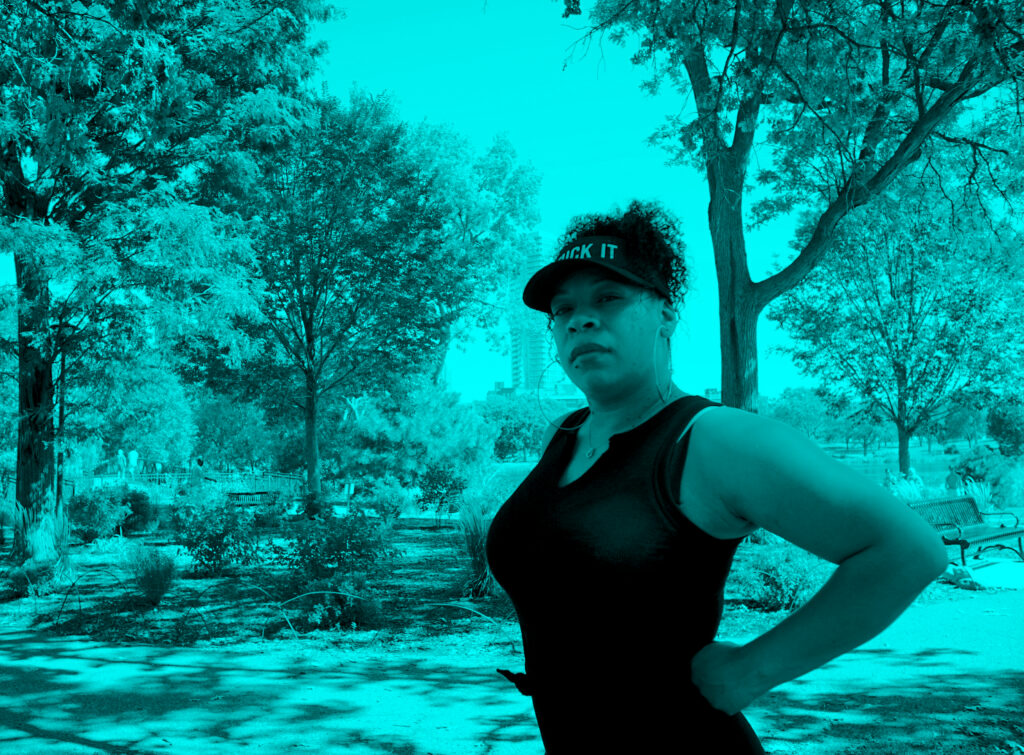
Chicago footwork was migrating to Minnesota back in the mid 90s. I was about 10 years old, growing up in North Minneapolis, when I got introduced to a couple of people here who were starting local dance groups and dance cliques. But they were all from Chicago. A lot of them I still talk to to this day. They’re basically another family for me. And they inspired me along the way. They showed me a lot of different things, introduced me to a lot of different dance styles and now have become like my brothers and my sisters.
I started with a majorette and drill team called First Step, directed by the late Major Tops. There I was introduced to Taywon, a dear brother of mine. I was 10 years old. This was around 1997. He was the first one I’ve seen bring Chicago footwork to the dance floor. I was immediately intrigued, and he took a whole summer and taught me how to footwork, from what bangs are, werks are, ghosts, whips. Literally, every day I was at it, and I became the first female in Minnesota to ever footwork.
We had a couple of local teen clubs back then. There was The Industry, Graffitis which was a teen club, and a boxing gym called Circle of Discipline. And you know, at this point in time, I was way too young to be able to get into any of these clubs because they were for high school kids. I was not old enough, but I was being snuck in the back door. I was being passed out IDs. I was very determined to be in whatever place was popping at the time. I became like a pit bull in a skirt, a secret weapon. They would go and battle, and they would just send me off on any and everybody. Anyone who was footworking in Minnesota, I definitely been in the ring with them. Being the only girl at that, I battled a lot of dudes.
I gotta put the legendary Nana out there. This is how I met Nana. Nana was brought to one of my first day of practices. Like I said, there was no girls footworking at that time. When Nana moved from Chicago to Minnesota, of course, Dicey’s name starts ringing bells. You gotta battle Dicey. Dicey is one who has footwork on lock in Minnesota. She was brought to one of practices and we battled there, right there on the spot. Me and her been sisters ever since. Like I don’t claim her as a friend—she is my family.
Back then, we were just some kids in the ghetto. For a lot of us, dance was therapeutic, if there was anything that we were going through. Our houses were broken. There’s a mean streak of violence in the state in Minnesota. We all grew up in the worst parts of Minneapolis on the Northside. It ain’t always been a cakewalk for us. Yeah, you know. So practice is something that we never missed. Any events, any dance battles, we never missed that because it was always more than dance for us. First of all, it kept us out of trouble. It kept us off the streets and it was our passion. We felt like we were born to be dancers. There’s nothing else in the world that I had ever seen myself doing. Right now, as a mother of two, a lot of my dreams had to be put on hold because I became a mom. But there’s nothing in my bones and nothing in my soul that interests me more in terms of a career. So I’m doing what I have to do until I can do what I want to do.
I’ve been dancing in the Bud Billiken Parade since I was 10 years old. Major Tops did the parade every year when I was a kid. He would rent a school bus and we would drive every single year. They were a really big influence on the Northside of Minneapolis in the community. There’s probably not a girl that is alive that can dance that he did not have on his team. There’s been generations and generations of him providing, teaching, and doing for the community. He did a lot of different things. He was a very strong church pastor. He created a school for youth in the community. He gave back a lot. He made sure our grades were up to par, too. He made sure that we were on the up-and-up with our parents and doing what we were supposed to do at home. And so First Step is a huge influence on my life.
From there, I went on to Magic Feet along with Taywan, Boogy, and Nana. Magic Feet was just a footwork group, not a drill team. From there, I then went to House-O-Matics, a group originated in Chicago and brought to Minnesota. There was a guy named Jimmy that moved here to Minnesota and started a chapter of House-O-Matics. That’s where I became the first lady of Minnesota footwork. That group also broadened my dance versatility because it wasn’t just footwork, it was a lot of hip-hop dancing, house dancing, a lot of things that I wasn’t used to doing. I was intrigued by that, and I kind of became Jimmy’s protégé, his understudy. He taught me a lot. I still talk to him on an everyday basis. When Jimmy was here, we would go down to the parade every year. We would dance at the parade and battle at the end, right in the tennis court. We battled anyone, whoever wanted smoke.
Let’s be honest, though, Chicago is who started this. Chicago is the originators of the footwork, and when they see somebody coming from Minnesota, they’re like, “You know where you’re at, right? Know you. Right?” So now you got a burden on the floor. You gotta show your shit. There’s been many times where I was in that ring with some of the best of them. They definitely know my name.
RP Boo (DJ/producer and originator of footwork music in Chicago) had a group called D’Dynamic in the early 2000s. So one year the Minnesota House-O-Matics chapter went down the parade as D’Dynamic that year and we teamed up with RP Boo. He is still a very good friend of mine. I still talk to him from time to time. He always came back and forth to Minnesota. Any type of events or any type of parties or anything, he would come up and he would DJ. RP Boo and Jimmy go way, way, way back, so they were more like brothers. They have a brother relationship, you know, and he was very, very much in tune with the Minnesota House-O-Matics chapter back then. We ended up touching base in Minnesota, too. We’ve done the Juneteenth celebrations, of course, the Rondo Days parade, and much more.
A lot of RP Boo tracks that I love, we don’t even have no more. A lot of them were custom made just for us. He would make custom tracks with our names in them. The ones I really, truly loved, you can’t find them on YouTube. You have to dig in the crates for these. RP Boo for sure would be my number one, top DJ in the world when it comes to house tracks. He’s very innovative. He’s different. You can identify an RP Boo track out of 10 mixtapes. I know exactly how it drops, how it snaps. I know how it’s going to sound. He doesn’t even have to say his name in the track, in my book.
To The Era, I give all kudos and take my hat off to them because they are living out my dream, being able to take footwork international, being able to take it across seas, to different cultures, being able to show the world something, that we been the underdog for for a long time. And to see different cultures—they really study it and they’re actually very good at it. It’s something that’s always been a big dream of mine, just getting it out there, just telling a story. It’s not only something positive, it’s everything—like, this is my life lessons. The core to my heart is exactly what they are doing and I love it. I am a 100 percent supporter. I love everything they’re doing, the dance workshops for the kids, the classes, and just taking it everywhere. I feel like it’s now getting the recognition that it deserves. That was all of our dreams. Everything that The Era is doing, the heights that they are pushing to take it is definitely where we all saw it going. We did not think it was going to take this long. But it’s now or never. Now it’s getting out there and it’s telling this story that’s going back to its roots from where it all originated.
Water is always running, just gotta turn on the faucet, and that’s going to open up opportunities all over the world for kids to come. Once it’s introduced and it’s set on that platform, it’s going to go from generation to generation to generation. Footwork is going to stay on the map and not fall off. Shout out to everybody that’s a part of the movement that sees the same vision that we do. Not giving up hopes, not giving up dreams—that’s where this comes from. It’s amazing how big worldwide it is now. I’m seeing footwork on the BET awards. I’m seeing footwork in music videos. I’m seeing people in Japan really being good at it. It’s a different type of inspiration for me. It still gives me inspiration 25 years later from where I started. It makes me want to get back in the game. Now there’s a village. It’s bigger than just us now, bigger than just me. This is something that’s taking over the world now and it just warms my heart to see.
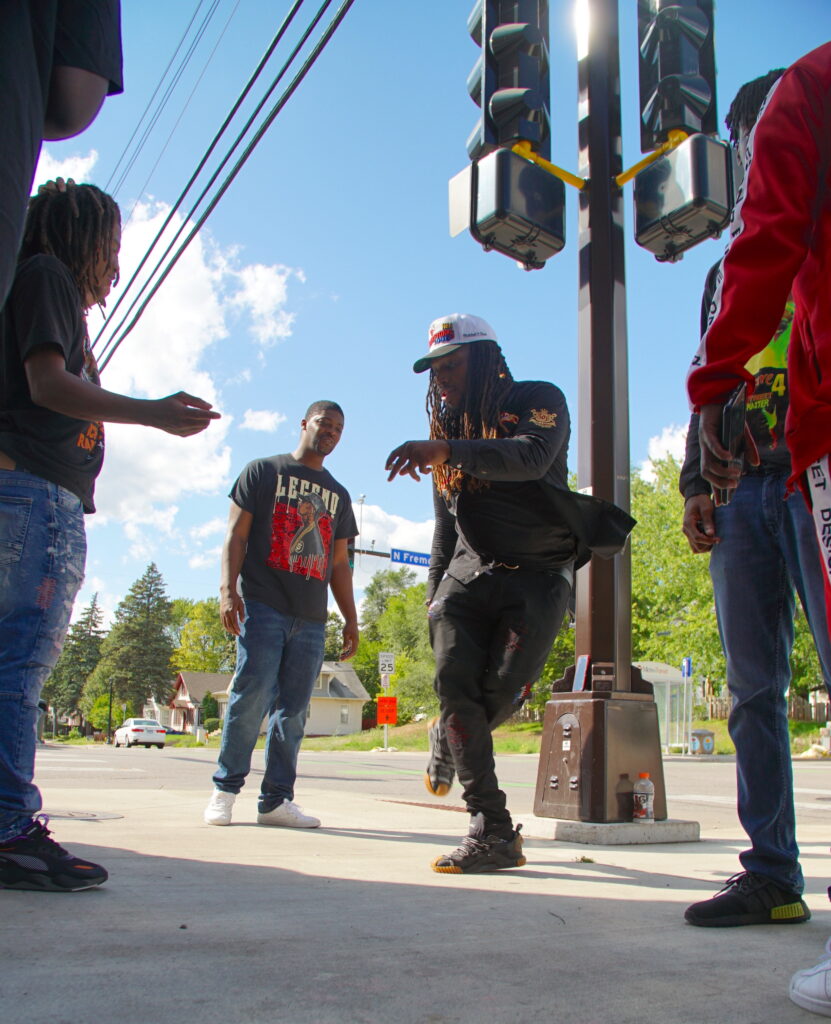

Boogy
james richmond
The first time I saw footwork was in 1996. I’ve been dancing since break dancing and I immediately fell in love with this style. It also helped keep me off the streets of Chicago and doing something positive. I started as a solo dancer when I moved here to Minnesota. I was focused on being the best footworker in Minnesota.
The origin of Magic Feet comes outta Chicago with my cousin and three of his friends. They performed in school only—once they graduated, they moved on and I kept it going. I had a vision of taking it to another level outside of the streets, so when I moved to Minnesota, the streets is where I started. I brought footwork battling to Minnesota. I found out the main group was House Squad, led by Richie Rich, and I found out through Tywan (who became a member of my group) about every party they threw, or wherever they were at, and I went. I got in every circle to battle them to let them know there was a new sheriff in town and his name is Boogy. It took me a while to get recognition. I was at Graffitiz and the C.O.D. every week religiously to battle anyone touching the floor, and I was cooking them left and right. Finally, my day arrived at the VFW over South off Lake Street, and in the beginning the crowd booed before the battle. Once that beat dropped, it was over for them. With the help of Tywan and Ricardo, Magic Feet moved up a notch and by the end of it, the crowd was chanting, “Magic Feet.” I can’t explain how great and accomplished I felt. The rest is history, and I’m glad I was able to grace the floor with the various groups: House Squad, F.O.M., Reaper Mob, just to name a few.
Footwork is like my oxygen. It gave me a reason to leave the streets and want more out of life, not only in keeping me healthy but it also helps me build a family-type relationship with people I don’t know.
As far as helping me while I’m incarcerated, it keeps me in shape and makes me feel younger than I am—45—and if you quote me on that I’ll deny it on 34 Bibles and 52 Qurans, j/k. I have met other guys in here that are into dancing and I thought to myself, “Wow, all this talent going to waste behind these prison walls.” This gives me an extra boost to push harder than ever when I get out.
My main goal is to one day open up my own community center to help the youth spread their talents and put them to use instead of all this unnecessary killing. I’m also into acting so I’m going to incorporate quite a few things once I get up and running.
Curtis
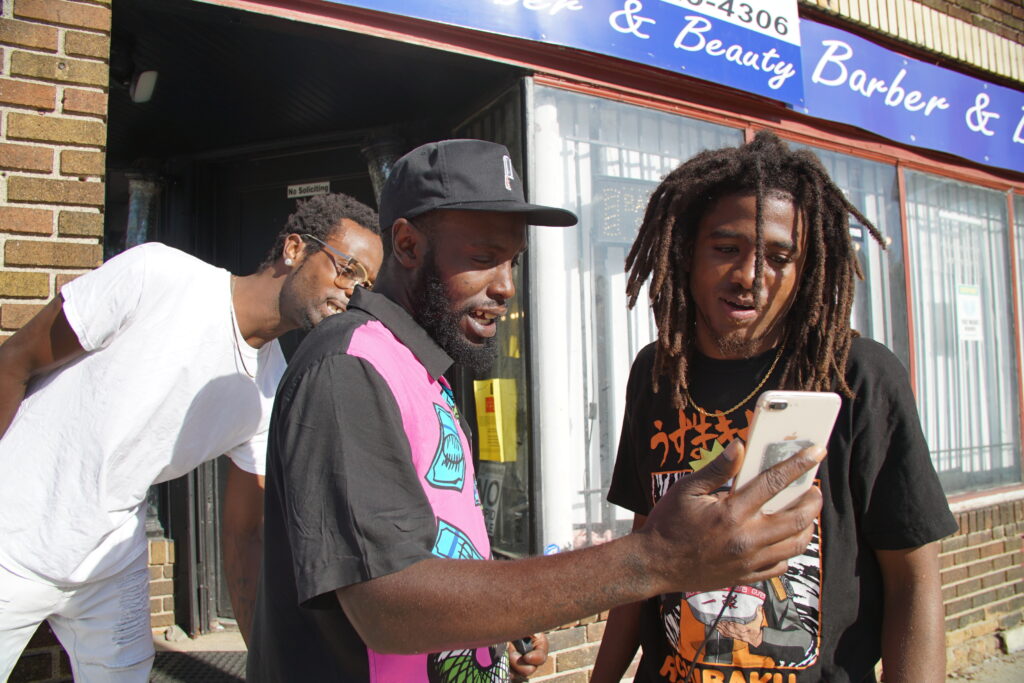
DJ Rolo, Curtis, and DJ YB. Photo: Wills Glasspiegel. 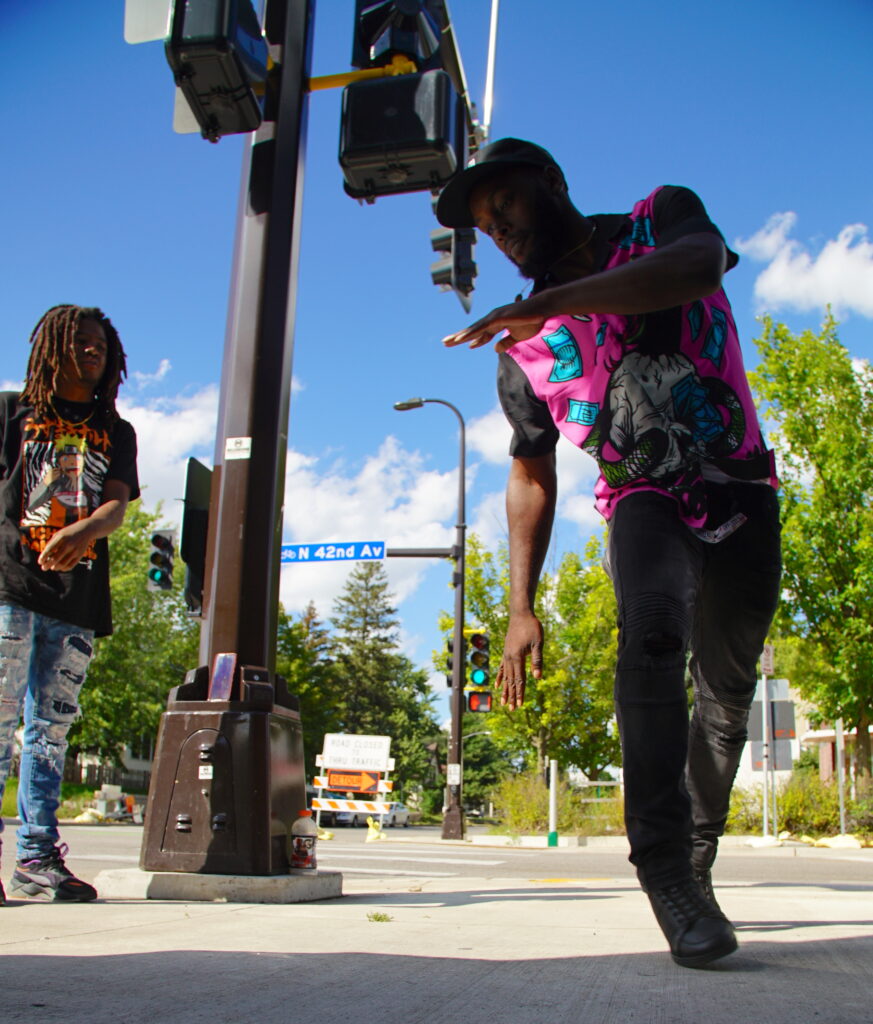
Curtis. Photo: Wills Glasspiegel. 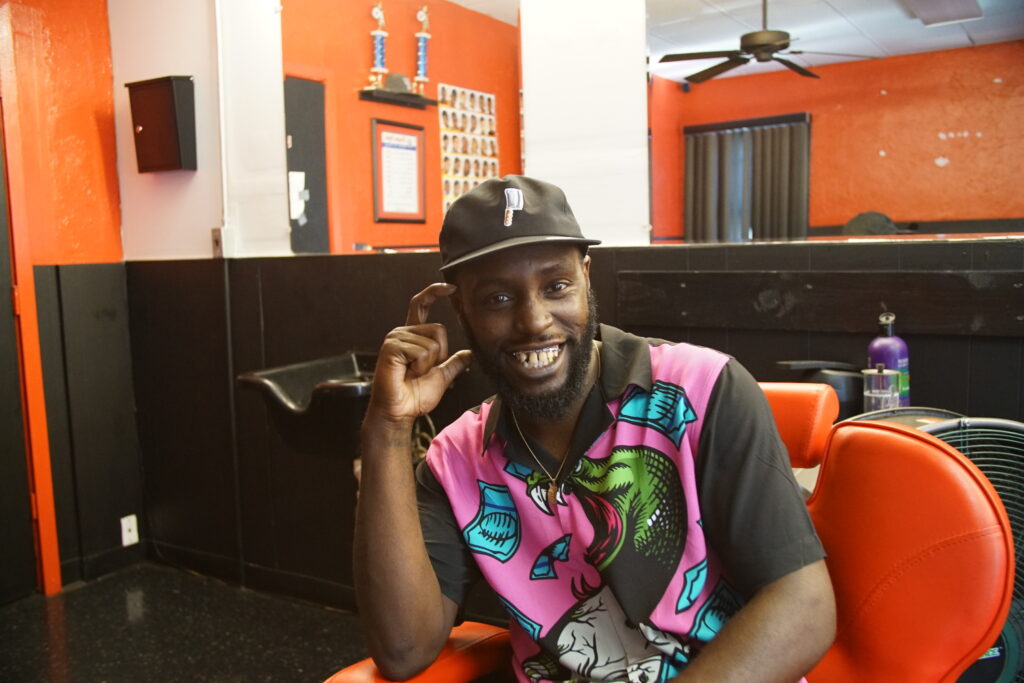
Curtis, 2021. Photo: Wills Glasspiegel.
I was born and raised in Harvey, Illinois. 1996 at the Markham Skating Rink in the south suburbs of Chicago—that was the first time I seen footwork. My mom was working up there. She was managing the skates, passing them out to people that come in with tickets.
I was just wondering, “How the hell do they move their feet like that and they was keeping up with the beat?” I ran up to my mom and asked her what it was. “Yeah, this is called footwork, son. That’s what they do up there.” She hit a quick little step for me. So I was like, “Oh, that’s what it is.”
Jumping in the circle when I wasn’t supposed to is how I learned. That’s when I met Kenny, Jron, Ashton, Lil Chris. It’s a lot of people I’ve met out there footworking. It was mostly Markham Skating Rink, Markham Field House, local hood parties in Harvey, House of Kicks, 111th Street YMCA, Paul Hall on 92nd, and Halstead where Kings of Juke used to practice. First group I ever got in was Total Eruption, DJ Ro’s group in Harvey. Ro was the first person to start teaching me after my mom. Then Manny started teaching me and I got into Taliban.
Footwork was a big connector. When I finally took it, me and Manny went to Wala Cam on the West Side. That’s how I got to be on Channel 14. Wala was putting it out there. I be out in the world and someone would say, “Eh, I was just watching you on TV last night.” I was like, “Huh?” I didn’t even know. Never seen the show myself. And then I happened to be at one of my people’s cribs that was in the city and they showed me. He was showing it and like, I just did this Sunday. That was crazy. My first time on TV. This was 2005.
Then I started producing music, just messing around in the basement with DJ Ro and DJ Manny. Just watching those two make tracks on Fruity Loops 6 or 7, it made me want to make tracks. I started making them just off of watching them.
I started taking it seriously in 2009, 2010. DJ April from Japan started listening to my stuff on SoundCloud. I was getting good feedback. So I started taking it more serious, and Manny was getting on my ass like “Eh, you got people looking at you now. You need to keep up with this.” I was keeping it up, but then I stopped making tracks for a minute when I moved to Minnesota in 2013.
When it comes to music, I also have to say my influences was my grandparents because they always listened to blues, jazz. So they was putting me on that young. They listen to that all day, every day, blasting it through the house, like how a regular footworker would listen to some footwork tracks. So when I hear something that I like, something new that’s old, I’d write it down and take a note, and then later I’d try to make a track using those records as samples—Roy Ayers, Al Green, James Brown, The Temptations, Bobby Womack, stuff like that. Another thing I used to do would be to sample from comedians. Red Fox, Richard Pryor, my grandpa used to go to sleep listening to all those guys.
Moved to Minnesota July of 2013. It’s easier to get a job up here. It’s plentiful on the jobs. I got a job three days after I moved here doing construction, and I did that till 2016. Then I got a state job taking care of special needs kids and adults.
My dance style is unique, mysterious, cause you never know what I’ll do. I switch up my style a lot. I definitely use dancing to cope with anger and stress. It comes in handy because there be times that I be ready to fight or do something that would get me in trouble or in danger. I go in my room and I just dance it out. Dancing definitely helped me. It helped me in life. It just helps me with everyday struggle. It’s definitely a good therapy. I want to give back to community. I want to teach my sound, the way I do it. That’s my way of giving back. I want to show them the rare form of what I do and what they can accomplish off of it.
DJ Tyson

My name is DJ Tyson. I’m from Chicago, moved to Minnesota in 2004. I’m an event producer, a dance team CEO, and I own what Facebook rated the “top Black-owned automotive shop in Minneapolis,” Marcus Motors Auto Repair. I fell in love with footwork when I was young, growing up in Chicago. I lived at 62nd and Eberhart and my grandmother lived on 46th and St. Lawrence. That’s just a block or two away from King Drive. Every summer, two blocks from her house, we used to see the Bud Billiken Parade. That’s where I first saw footwork on a big level.
I ended up moving to Minnesota at the end of 2004 and it was totally dead in terms of footwork and juke. The 90s era of Minnesota footwork was a golden era. So when I got here, I just started it back up. I shocked it back to life. I took a house party I had started in Chicago and scaled it up in Minnesota. The event was called “Juke How You Wanna.”
By February of 2005, the whole fucking state knew about this shit, like my my crowd was so big it could fill up the Target Center. Mostly teenagers and youth. It was easy because it was an open lane. They had never heard our music or seen a party on this level. I reached the youth and also created a platform for the 90s era of Minnesota footworkers to share their craft, to pass it forward in terms of footwork.
You see The Era coming to The Walker and making their way as dancers? They wouldn’t have been able to do that back in the day because the DJs was the stars. We marketed ourselves as the artists. This was right at the beginning of the internet becoming popular. I didn’t pass out flyers. We had MySpace. Minnesota had never seen parties marketed this way online. We put up videos on YouTube in 2006 that have over 500,000 hits today, right when YouTube was getting started. Our parties were so popular that kids were literally tearing down the door to get in.
This ain’t no normal party. The footwork, the house music, the house tracks. It was all fresh. We had everybody, any type of people you can name. In Chicago, when they did parties, you were only seeing Black people. Right here in Minnesota is more diverse: Asian, white, African. It didn’t matter. We had all these people from different private schools, country schools all the way out in the sticks. Minnesota is a melting pot.
In the early 2010s, an African gentleman approached me at a party. He was from Ghana. We called him Mr. T. He told me that what I had created was a community center, and that I’m supposed to get funding for it. He educated me and we ended up starting a nonprofit organization, developed a youth dance program, established a partnership with the Park District, and have been using dance to build community and save lives in Minneapolis until now. It’s called The Celebrity Dance Organization. We also connected early on with Urban Ventures, who helped us get our start.
Now we do parades across the city. We own and operate our float. I’m big on ownership. I wanted to be the first DJ with a dance group and own this float and travel with the kids. In 2019, we did the Bud Billiken Parade in Chicago. That was amazing because I’ve been going to that parade for my whole life, and to bring my team from Minnesota meant a lot. Not only did we come down there, we owned everything, our float, our sound system. Most groups have to rent these things.
The biggest one we do every year is the Minneapolis parade. That’s a parade in downtown Minneapolis, and that’s a huge parade. Of course, we’re going to do the parades for our community, like the Juneteenth Parade and Rondo Days. Rondo Days is for the Rondo community, a historically Black community from way back in the day that was destroyed when they ran a highway through it, Interstate 94, took their homes and made this road. So every year they have a parade to remember that the neighborhood is beautiful. House and footwork been a part of that parade since 90s. The parade plays a huge part in our culture.
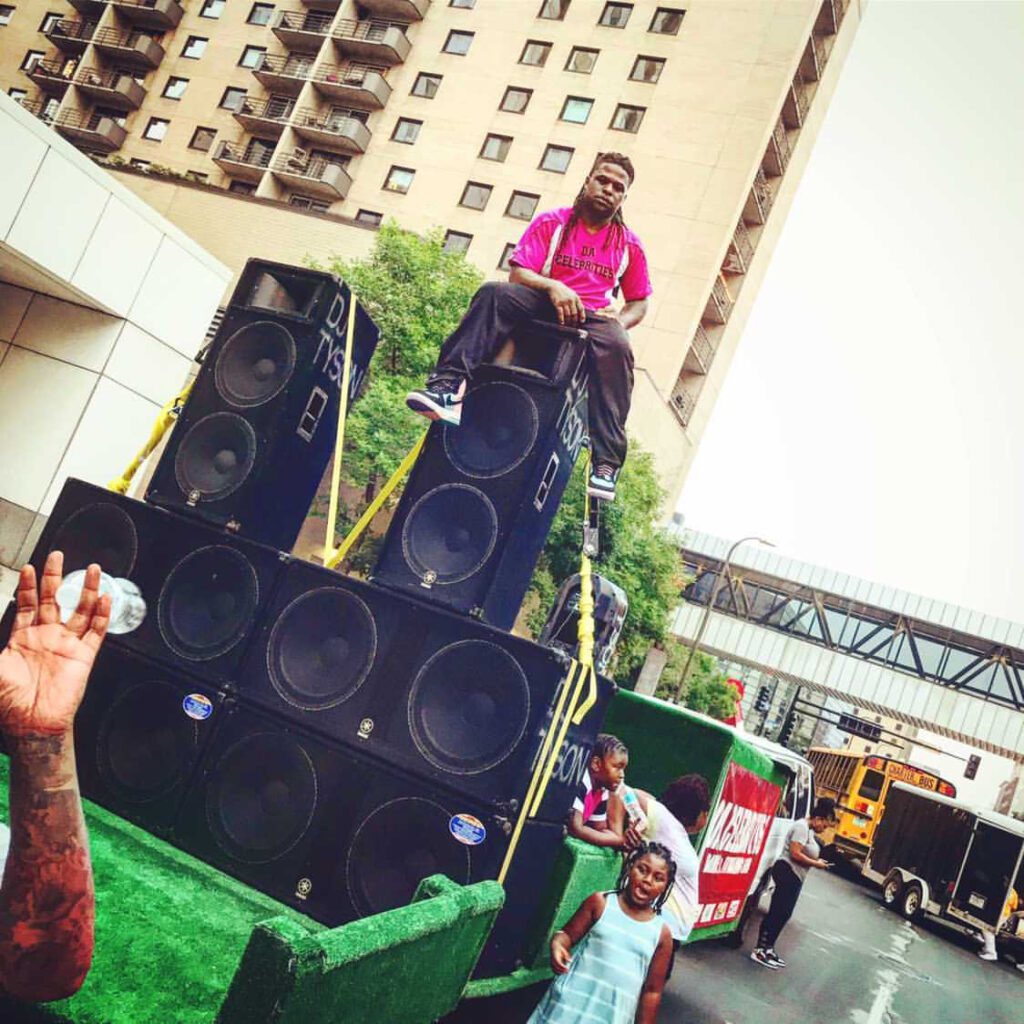
DJ Tyson at a parade in Minnesota, 2021. Photo courtesy the artist. 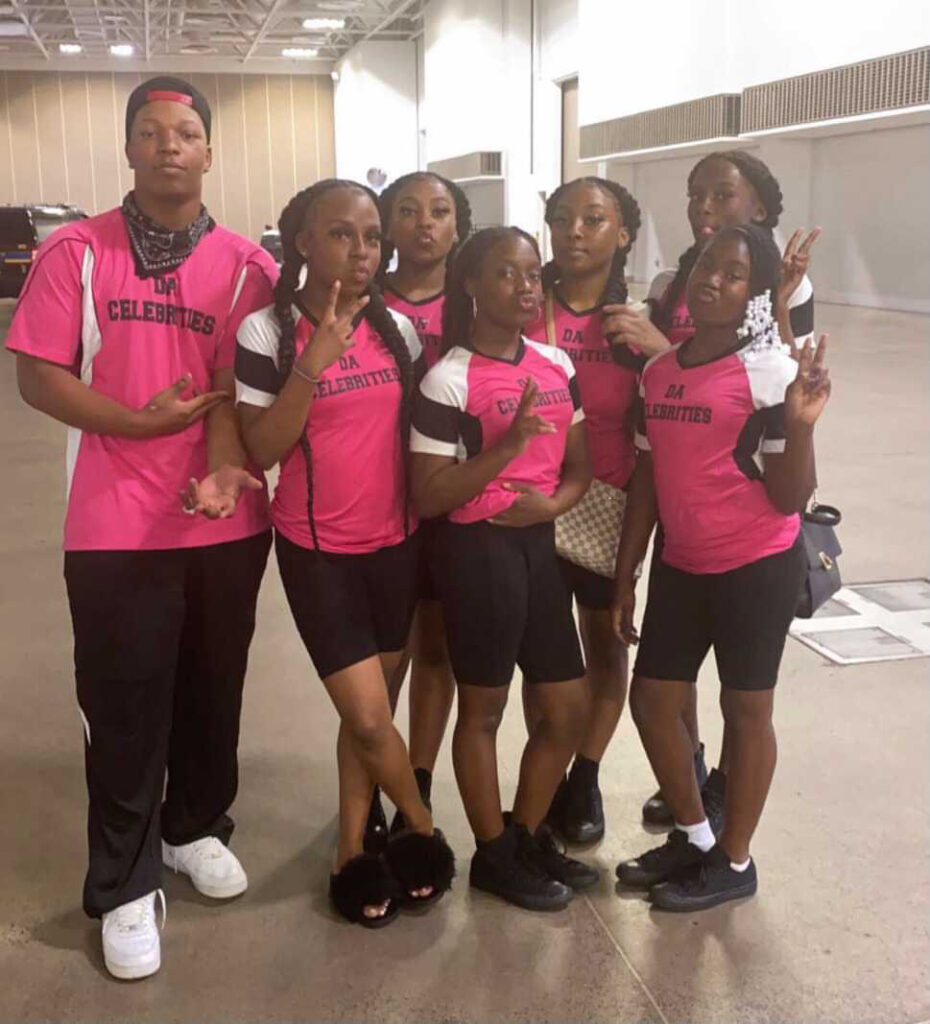
DJ Tyson’s group, Da Celebrities. Photo courtesy the artist.
We went to every parade in Minnesota. You got the Columbia Heights parade. In Chicago, the biggest parade is the Bud, but here there are more parades. Every surrounding town and city has parades out here. Some of them have two or three. My dance team does at least seven parades a year.
I still dance with my team. Like I told you before, I’m not just the DJ. That’s what makes me so mobile because I’m not just a DJ. I’m not just dancing. Some say you got to pick your lane, right? I’m all of it in one person.
When I was coming up in Chicago, I never was with a Chicago dance team. I was never in a battle clique. Even if I wanted to, it was so hard to break into that circle. They didn’t let everybody in. You had to be special to get it. Ant Brown and all the dancers back then, they were special people. Yeah, you couldn’t be a nobody and get in that shit. It’s hard to get up in that community. So I didn’t join a clique, but that’s what made me me. I’m like, okay, I’mma overdo it. I’mma do every fucking thing. You know what I’m saying?
The dream? I want it to continue. That’s another reason why I started the nonprofit with the kids. To pass it down.
DB
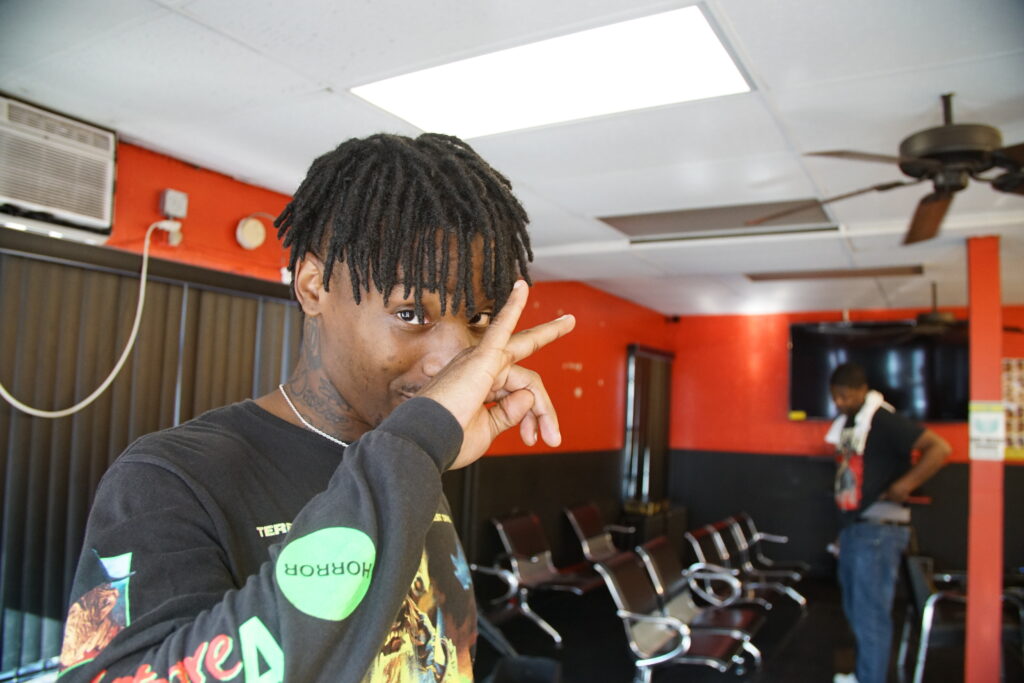
I’m not from Chicago. I’m from Minnesota, born and raised. So I didn’t have any Bud Billiken dance team to teach me how to dance or anything like that. I learned about it when YouTube was peaking, for everything music videos, dance videos. I was watching a lot of Wala Cam, paying attention to different approaches, different styles and seeing how crowds reacted to certain things. I was learning the language. I began to pick it apart by listening to the music.
Basics are essentially the format of your entire style and your delivery. So the better you are with the basics, it opens you up to different transitions and different moves. The more you know your basics, the more your mind is going to inevitably teach you new moves because it’s like new possibilities for your muscle memory.
Seeing people’s reaction, how amazed they were, the element of surprise, the quick thinking that footwork requires. You gotta think quicker than you would have to think in a fight. And you gotta have mental wherewithal. The energy that Chicago—being the mecca—the energy that Chicago brings to the table, being the home of it, is really intense, really competitive. It’s a lot of negativity. We have a lot of deaths in the footwork culture. Fights, deaths, shootings, a lot of hardship. People in poverty use footwork as an outlet. Like how a skater would use a skateboard to let loose. It’s a lifestyle. Once you understand the concept of what it is, it’s hard to be uninterested.
I watched battles. That pulled me in and it made me want to learn. Once I realized my potential and my ability to be able to watch and learn, I pretty much taught myself. I didn’t take moves that people used in battles, but I would try to teach myself the process of how they got there. Like how did they complete this transition? If he got two feet, I got two feet. If he did it, I can do it.
It’s really artistic and the floor is your canvas. Like how good of a picture can you paint for your audience? How compatible is that going to be to the vibe in the room? You may have a good-ass painting, but if the people in the room don’t like those colors, then guess what? You know what I’m saying? It’s the same thing with footwork tracks. You hear a footwork track and it may be an aggressive track. But you come out calm and people are expecting energy. Or it could be a smooth track and you come out aggressive and you can go past the tempo of the track to the point where it looks like you’re not dancing on beat. So people are kind of confused, like what language are you speaking there? Like, what story are you telling me? Because it’s not compatible with the track or the vibe in the room right now.
It’s really hit or miss with rounds and battles because you just never know. It’s a totem pole as far as rankings, but there’s really no best to me. I done seen the best lose. The most unexpected people win. It’s like fighting, it’s like the element of surprise. The aggression is like fighting. People be pushing. And you gotta have the maturity and the emotional grounding. You’ve gotta be emotionally grounded so you don’t end up in a fight.
I’m not the first footworker born in Minnesota but I’m probably the most notarized. To not be from Chicago—I put that on my wing and fly with it. So over the past decade-plus, I just been battling. I been networking. I started the footwork clique, Take Over Bangz in Minnesota. I got connected with the group Tribe National through Chicago footwork dancer Rashad Harris who lives in Chicago. I’m part of the Minnesota branch of Tribe. Because Tribe was like a brotherhood that had an “each one, teach one” mindset, positive intentions. Between 2011 and 2013, we done a lot of networking. Tribe was coming from Chicago to Minnesota. We had kind of this underground scene, you know, doing events, doing lab sessions, battling people from Minneapolis, like doing St. Paul vs. Minneapolis type deal, featuring Chicago. We was learning from each other.
DJ YB left Minnesota for about a year for Chicago and became a part of the battle clique Taliban. Taliban includes DJ Manny from the Teklife crew. YB, he was my arch-nemesis. His lineage was Taliban and mine was Tribe. Chicago rivalries also played out in Minnesota. Approaching me like a rival, YB was also just teaching me about competitiveness. Once I realized that, I applied that, adding to my arsenal. I just took off from there.
People from Chicago started giving me recognition through Facebook, and then I went out there to Chicago in 2010. I went out there with Nana. She already had notoriety representing Minnesota in the footwork scene. That’s big sis. She took me on her wing. And she told me, “You going to get respect. It’s going to take about 10 years, but you gonna get it.” And she was right, it took about 10 years. I just been trying to pave the way for people that’s not from Chicago, and that ever loved the culture or been interested in it. I just try to teach, stay humble. Each one, teach one.
Like I told you before, Chicago wants to run the Midwest. They don’t want you to stake claim to anything that belongs to them culturally. So there were a lot of comments when I started dancing, like, “You all whack as fuck!” and, “You can’t do it like Chicago.” I was there to kill the stigma. Anybody can get burned. Anybody can lose. It doesn’t matter where you from. It matters where you at and what you can do. What actions is you willing to take?
The Trap was a place that did a lot for us as dancers. We came together, males and females came together to do something positive. That was in St. Paul on the East Side. We started there doing St. Paul vs. Minneapolis footwork battles. I helped organize everything. I gathered up my guys. Even though my guys love footwork, they didn’t care about the promotional part of it. They didn’t care about like, bringing the city together. I had to do all that. I had to take the buses across town, go meet these dancers over here at this studio and bring people together. I did all the networking.
With the Trap, we was doing positive things in a negative environment. We was drawing so much attention, particularly from women. It arose attention from the hood and it went from doing something positive in a negative environment to a territorial problem. And when some weren’t invited, they moved to sabotage. I just happen to be there. I was out there with Tyson and he wanted to handle the situation because it was his house, but me being a solid dude, I put myself in that situation. Of course I didn’t know there was going to be gunplay. I end up getting shot in the leg. My leg broke and my femur shattered. I had to get the rod in my left thigh, screws above my knee, screws on the side of my thigh. I had to learn how to walk again, how to walk straight again, all of that. I got our shot in the leg in 2012. I got the reconstructive surgery. Came back in like six months. Went to the war zone in Chicago, battled right after surgery. Everything that I speak on, I got footage.
The reason I appreciated the Tribe coming out here in 2011 is because I had seen footwork for years before that, like in parties, but it never sparked my interest. They showed me how to dance without making noise. They were the first people I seen footwork and I didn’t hear shoes. They were showing me how to deliver without being overzealous and over-aggressive, really cleaning up delivery, having real intentions in your moves, not just letting the music talk for you, but actually being calculating in your approach to the point where you would think it would sound like basketball shoes on a gym floor, but you don’t hear anything. That opened up my mind to delivery. So when I go to Chicago, which is the mecca, you see a lot of that. You would see the footworking but you won’t hear the sound. That’s the artistry behind it.
I laugh and smile during a lot of my battles. I don’t look serious. It looks like I’m playing. At King of the Circle, I was the most relaxed person backstage and relaxed person on stage. And I’m not even from there. I drove hundreds of miles to get there. I’m backstage like, “What’s the heavy energy?” It’s just dancing, we do this all the time.
I’ve grown to appreciate seeing things front row and actually being able to touch, feel, see the environment and know why people do it, how it looks. I can cross-examine. I can look at how it looks in real life and how it looks on video, and see what makes things look the way they do. Like damn, on video, it look like he was going way faster, but in real life, he wasn’t going that fast. That’s on video. So it taught me to trust myself more. Instead of trying to emulate or duplicate, I started trusting myself. Like, this shit is easy. Like all he did was move his knee to the side and that looked great on camera. Like I said, it’s about picking apart the art.
Once you learn the concept of it, you can get creative, you could take off. Because you know how to come back to the basics, the basis of a round for battle. And the basics also keep you in tempo to the track. Footwork tracks are fast. It’s like running up steps. You can’t just jump into a round and just start hitting hella moves. You gonna be tired as hell after the first round. It’s about being strategic. It’s about when you come in, kind of like jump rope. You ever seen girls play double dutch and they watch rope? They wait for the opportune time to jump in. Everything’s about timing.
Venues important to footwork history include the Trap and the Warehouse on Hiawatha in Minneapolis, an iconic place because we did a lot of battle events there, including a King of the Circle, the Maruso Bar in Minneapolis, Club Honey and Pourhouse in Minneapolis. The Concordia Rec Center. Every year they do dance down events. All the dance teams in the city come to that spot, and it’s a big competition and people come from out of town, and judges. The Studio on Glenwood and Morgan in Minneapolis. And the parade, sometimes KMOJ would throw a parade or, you know, we have the Rice Street Parade or the White Bear Parade. Sometimes Tyson brings us out and has the speakers blaring, pushing the culture.
It’s underground. So there’s not really a spot per se. For instance, the X Games happen in random places. Like whoa, how did you come up with that? It’s the same thing with footwork. Space, opportunity and convenience for the dancers is what determines where a footwork event happens. That’s what defines underground, just the miscellaneous locations. The element of surprise when it comes to battles like battles happen unexpectedly.
I want to have the highest underground status out there. I’m never going to move to Chicago. I just want to have the highest underground status out there. Our history is very different from Chicago because Chicago got a lot more structure. They got dance teams, drill teams, more studios. Minnesota ain’t the mecca for footwork. So they doing the hip-hop out here, they doing everything out here. It’s super divers—pop lockers, break dancers, jukers, footworkers, krumpers. Minnesota is just a mesh pool, all styles.
To make footwork stand out out here, it’s a feat. It’s definitely a feat. I’ve had plenty of people come at me from Chicago, saying I’m weak. Over time it just converted into respect. I never tried to reciprocate that energy with negativity. I always just reciprocated it with competitiveness. Like, “Oh yeah? Okay, I’ll be down there next month and we’re going to see.” Over the internet, it’s easy to talk shit and just type some shit. When you in front of me, and you actually gotta lace up your boots, then what? You know, the energy is a little different. I’m big on energy.
Juke Nukem

My name is Jose Gonzalez. I go by Juke Nukem. I live in South Minneapolis. I moved up here in 2009 from San Antonio. That’s where I first heard Chicago juke and learned about footwork music and the dance culture. That’s how it became my focus. I did some digging in Minneapolis and met footwork artists from here. That’s when I linked up with YV, DV and Too Tall. About 2013, I started throwing shows at Honey with John Davis, hosting Chicago footwork DJs in Minneapolis like DJ Spinn, Taye, Heavee, Trey, Tmo, DJ Earl and Traxman. I also linked up with DJ Spinn and DJ Rashad when they were opening for Chance the Rapper in Minneapolis.
I run an organization and record label called District 160. We got me and Dif that do it out here. And we have a few people elsewhere—we got to Sideswipe out in Philly, and JTRA in Cali, Cuenique, Big1 and Attacus in and around the Midwest and Texas. What we do is we put out music, and pre-COVID, we put on events in different venues in the clubs out here—Honey, Maruso, Barfly, we did a couple at Pourhouse, a couple of warehouse things. It’s really just where I get booked. You know, I’ll put on my showcase and try to get, you know, a couple of dancers to come out here and there. It works out sometimes. Sometimes it doesn’t. But it’s always a good time.
I’ve been DJing and producing since the 2000s, but when I got into the juke and footwork community, I learned a lot of my production techniques and how drums correlate with the dance moves from Traxman, the Teklife guys, and Fresh Moon. Everything else is just my heart, my soul, my passion that goes into it.
“Dance Like You Mad”: That’s a track that I did to graduate from the Ableton Master’s program at Slam Academy, a music school that’s out here. I now do private lessons with them, and I’ve taught a few classes in DJ/Production. “Dance Like You Mad” was my final exam when I was still a student. I also featured my homie MC Astro in Dallas. I sent him some basic drums and then asked him to freestyle over it. So he made a chorus and verses, and then I just took that and threw that through my sampler and put my drums on and kind of just doctored that up.
“It’s Real”: This track is my submission for the brief compilation that we put together for raising funds out here for our community after the George Floyd protests. I sampled some random guy in Chicago stealing a police horse on Instagram. When the protests were happening after the George Floyd murder, I went out and was doing street medic stuff. And then after they started putting curfews down, I reverted my attention to, how else can I help out? So I did a lot of cleanup stuff and then been out there cleaning up. Help wherever you can get it. So we’re like, “Hey, we should do something. We’re out here. You know, we should raise some funds and donate it.” So we reached out to a bunch of different artists around the world and got 30 submissions and put it together in less than a week. And we set a goal of $1000, and we ended up raising over two and a half grand. We donated it to Juxtaposition. It’s like an art center for teens ran by teens, a couple adults, but it’s BIPOC out on the Northside. So we donated to them and recently found out that I think they got a new building or new facility or whatever. So I think that helped out with that.
As a producer, I make Chicago footwork, so I do look to Rashad, Spinn, Clent, Traxman, RP Boo, EQ Why, because that’s where it’s from. Outside of that, I draw from old school, like metal. I listen to a lot of Judas Priest. A lot of how I bridge things and block things together, a lot of how I’m making my tracks comes from buildups and breakdowns in metal. I draw from hip-hop, too. I take inspiration from everyday life. I’m an athlete. There’s nuances throughout the day that have nothing to do with footwork. And I just grab from there. I could be listening to trains, docks, disconnect, the work of a construction site. I find rhythm in a lot of things. I try to pull from that and make those make inspirations tangible.
Footwork is art, but it also speaks volumes to where it comes from. You are getting a tangible exhibit of what these dancers live through everyday, what they bottle up inside. In the music, you hear the aggression, or the happiness, or the sorrow. Speaking of art, the things you and The Era do, your pictures and films. It all just screams, “This is to be preserved and respected as culture.”
Art has no definition. It’s subjective to everyone. You may see a piece of paper, but I see a polar bear in a blizzard. Being at the Walker, how they display everything, going into the theater—that view of walking in and you know the experience is going to be subjective. Some people will be in it, you know, they’ll be in their element and some people will be out of it, and you’re going to see all walks of life walking into the Walker. It’s going to be beautiful.
I’d like to see here in Minneapolis what’s going on in the other places that have satellited it out of Chicago, out of the mecca. I’d like to see more footwork dance classes in Minnesota, like the way you see in Japan. I’d like to see the seeds being watered. I’d like to also see it grow competitively. I think it’d be awesome to get footwork at a level of not necessarily commercializing it, but like the way that you see battle rap. If you could get that and put footwork on that way, create a league. I think that would be pretty cool because then you can have different cities meet up and there’s a reason to attend. To see it become more of a sport would be nice, because the music will be there because you need the music to dance to, but then you’re also getting that same attention to the dance that it doesn’t necessarily get all the time equally to the music.
Unless the dancer goes with Spinn and Rashad on tour. Unless Litebulb and AG went with them on those first tours, you’re not seeing the dance on stage. You’re not seeing it when they played Monterey. It’s just a concert, which is great too. But the fact that it goes hand in hand, you can’t have one without the other. You can, but it doesn’t have that same, “Wow, this is what it is.” It doesn’t have that same splash in the face. To see it put more together on display for everyone would be my dream, to see it become a sport and become “sport-ized,” but keep it underground and gritty.
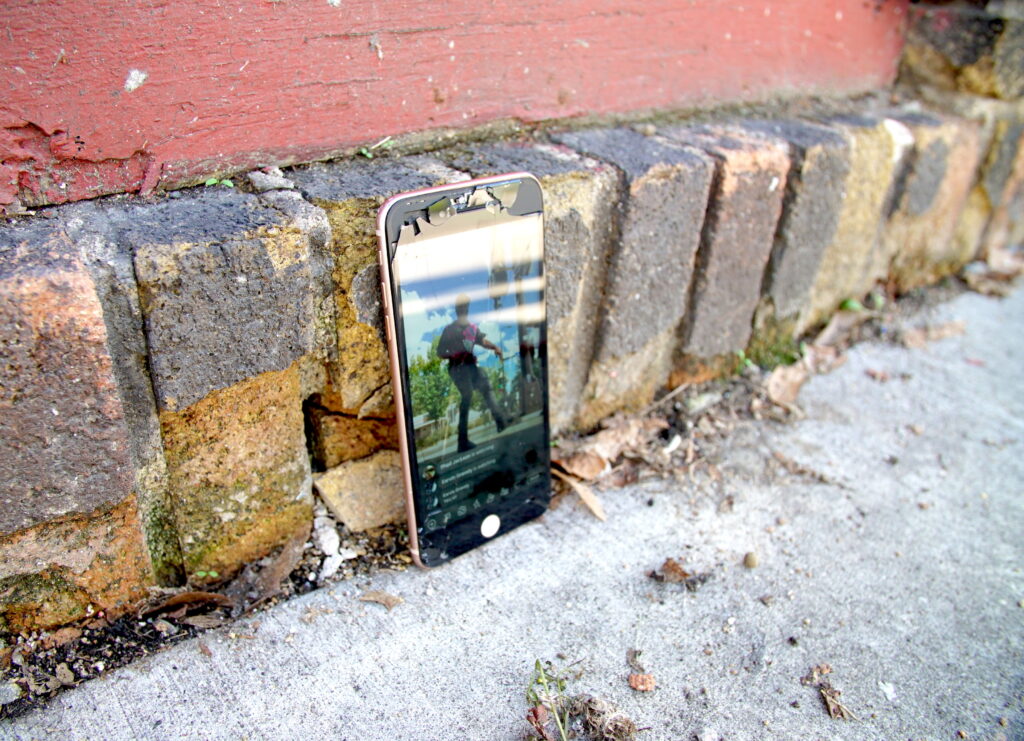
The Era Footwork Crew, IN THE WURKZ runs October 22-23, 2021 at the Walker Art Center. More information at walkerart.org.